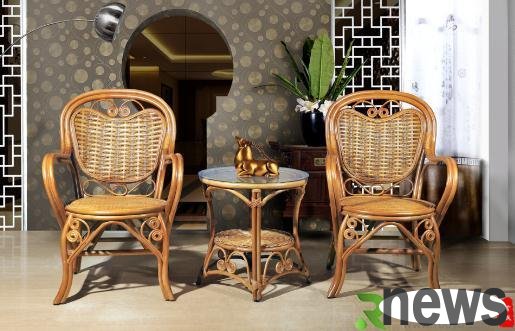
Cleaning and Maintenance of Wicker Chairs - Purchasing Knowledge of Wicker Chairs
First, see if the welding joints at the welding point are firm, and there should not be many exposed joints on the rattan surface. You must touch it with your hands. Smooth and flexible vines without barbed are the best.
Second, sit on it and try it yourself to see if there is a creaking sound when it shakes or is under too heavy pressure.
Third. In addition, it depends on the workmanship, whether the rattan is evenly weaved, whether the matching fabric is sewn delicately, and whether the hardware is high-end.
Tip:
1. Some rattan furniture are actually imitated with plastic and other materials. If you observe the broken parts of the rattan on the furniture, if it is a plastic or other product, the broken parts will be particularly neat, while the broken parts of the rattan will be frizzy.
2. The toughness of the vine is the most important. It is recommended to find the small sections of the extension on the back of the furniture and twist it with your hands. The inferior vine will easily break and the good vine will generally not break.
3. Choose products with uniform thickness and consistent color. Cleaning and maintenance of rattan chairs
1. Use a knife to remove the uncoated and stained parts. Scrape off the local stains and apply paint, or simply apply paint all. When you want to remove stains, dip them with good oily pigments and then apply paint. It is best to repaint after cleaning.
2. Clean with water, if it doesn't work, apply a layer of paint. Ivy is often painted or dyed. If it is dirty, it needs to be cleaned properly, but if the cleaning still cannot make it look new, you can use a method called "scrub the surface" or another thin paint method, which can usually remove stains.
3. Repaint. After the rattan furniture is dry, the next step is to paint again. The best way to use the spray method to paint, so that all corners and depressions can be painted, and then spray it after dyeing. Be careful to prevent the polyurethane from curing into a plastic surface, which is hard and brittle and may cause cracks to all bent areas.
4. Special treatment of damaged parts. For rolled and damaged paint, you can use the “ "scrub the surface ”" method. The tools used are as described above. Sometimes liquid scrubbers are required. The scrubbing time is long enough. Therefore, you need to use a brush to rub it on it. However, you cannot scrape it on the surface like a wooden furniture. It should be tilted and the tightly woven parts are above, so that the remaining liquid will flow to the looser parts and will not accumulate on the tighter parts.